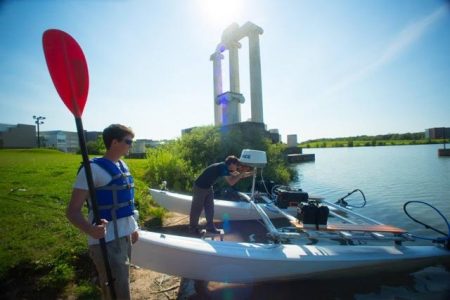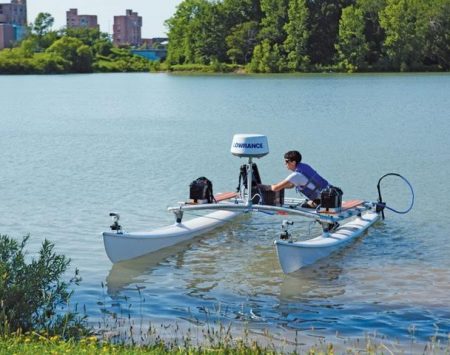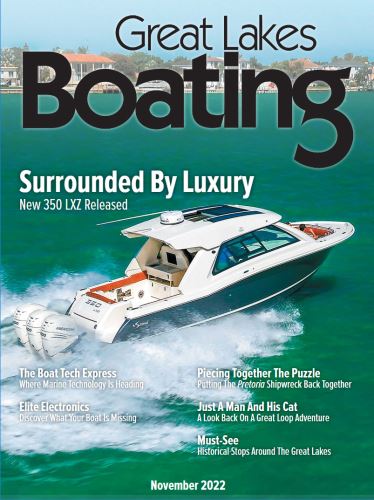By Jay Bouchard
The driverless boat—a vessel navigating on its own, independent of any crew or captain—has existed in folklore for hundreds of years. Ghost ships, like the infamous Flying Dutchman, have long been part of nautical legend.
And until now, the driverless boat has existed only in such eerie fables.
Over the past two years, however, a team of undergraduate researchers and entrepreneurs at the University of Buffalo, operating as the Buffalo Automation Group (BAG), has been developing “AutoMate”—a product that looks to make driverless technology a reality for recreational boaters.
The driverless technology was born from a university research project on a robotic boat, according to Thiru Vikram, founder and CEO of BAG.
“I grew up making robots, and people were always talking about self-driving cars and drones,” Vikram says. “I thought the easiest thing to do would be to make a boat self-driving because you don’t have to deal with some of the challenges that you have on the road.”
Vikram began developing the technology two years ago during his sophomore year at the University of Buffalo. He teamed up with classmates Alex Zhitelzeyf and Emilie Reynolds, and their research project went so well that they took their work beyond the classroom.
“The prototype we developed worked pretty well,” Vikram says. “We thought it might be a fruitful company, so we started Buffalo Automation Group.”

(L-R) Thiru Vikram, Emilie Reynolds, and Alex Zhitelzeyf. Photo courtesy of Buffalo Automation Group.

The BAG team prepares a self-driving prototype for launch. Photo courtesy of Buffalo Automation Group

Photo courtesy of Buffalo Automation Group

